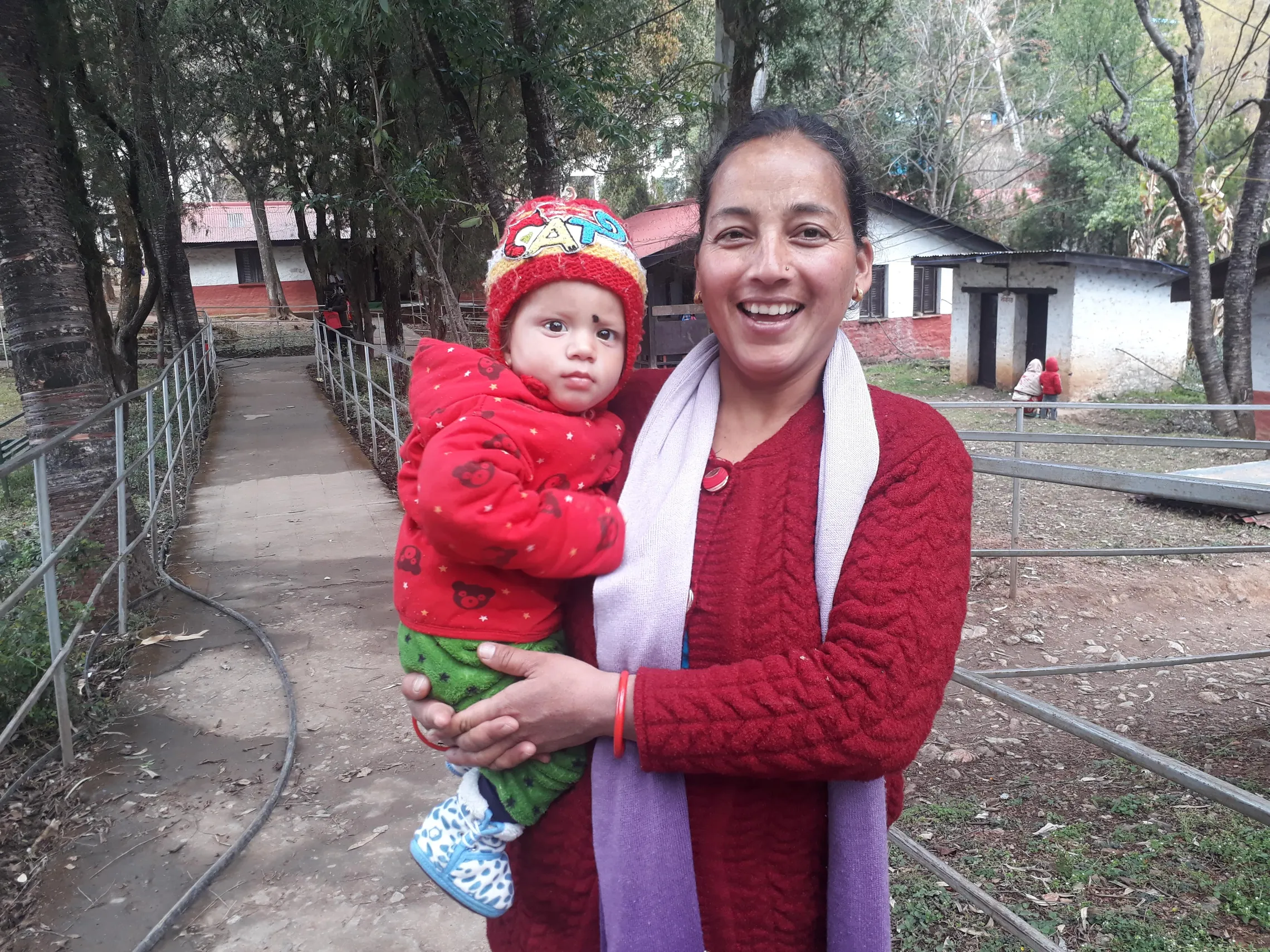Solar PVs and hygiene training improve health post’s maternal health services

Laxmi Khadka Oli, a government-employed member of the Auxiliary Nurse Midwives (ANM) is from Tribeni-5, West Rukum, Nepal. Having worked as an ANM at the Simrutu health post for over eight years, it was not until recently that she chose for the services offered by her health post employer. Laxmi’s increased trust and confidence on her health post’s services are due to improvements introduced by the Swachchhata (HHA, Health and Hygiene Activity) project.
Previously, the health post did not have access to electricity. Night-time deliveries were administered in the dark, aided by light shone from a mobile phone or a small emergency light. Wood and cooking gas were used in lieu of an autoclave to sterilise medical instruments. The absence of heating facilities in the delivery room increased the risk of pneumonia for newborns. Though the government did provide the birthing centre with instruments and equipment, e.g., autoclave, perilight, nebuliser and others, they were kept in storage due to lack of electricity.
These conditions discouraged Laxmi from seeking medical attention from the centre during her first pregnancy in 2013. Because of these, she opted to deliver her first child at the district hospital. Unfortunately, she failed to reach the hospital on time. She delivered her eldest mid-way.
Tribeni-5, West Rukum experience is not an isolated one. Based on SNV’s 2017 baseline health facility assessment, approximately 32% of all health care facilities in Rukum lack connection to any electric supply.
In November 2018, Swachchhata [1], with technical and financial support of the Renewable Energy for Rural Livelihood project and in collaboration with the Health Facility Operation and Management Committee of Simrutu, installed three KW institutional solar PV system in the health facility. Said Laxmi,
'__Now, there is 24-hour electricity in the delivery room. Health workers are more confident that they can deliver babies responsibly and properly. And there is no need for another person to be in the delivery room just to hold a mobile phone for lighting.'[2]

Laxmi Khadka Oli with her 13-month-old child
In addition to the electrification of the health facility (HF), health workers and support staff received two days of orientation in infection prevention. Health care providers were also trained in behavior change communication by the Swachchhata team to improve the way they conveyed sanitation and hygiene messages to health care customers. All these were part of a drive to improve health care services. As a result, staff started sterilising medical instruments, following standard infection prevention protocol. Same as my first delivery, I had planned on going to the district hospital for my second baby. But with the availability of electricity and improvements in service delivery, all my fear and doubts about the Simrutu health post’s services dissipated,' said Laxmi. In January 2019, she gave birth to a healthy baby.
Due to quality improvements in service delivery, delivery numbers in the health post are on the rise. Delivery in the health post in 2018 was just 77. In 2019, this had increased to 133; and to 160 by the end of 2019.
Holding her 13-month old child and with a smile on her face, Laxmi expressed, ‘I feel more satisfied providing a service than in previous days.’
Written by: Rajeev Banjara
Photos: Proper handwashing with soap as part of the infection prevention control training in East Rukum during World Toilet Day 2019 (banner). All photos by SNV in Nepal staff.
Notes
[1] Swachchhata (Health and Hygiene Activity) is an SNV-led partnership project funded by USAID. With the Population Services International (PSI) and additional support from the Sustainable Infrastructure Development Foundation (SIDeF), SNV in Nepal aims to improve the health status of communities by integrating sanitation and good hygiene practice and adherence in health services delivery.
[2] Learn more about the solar mini-grids component of the HHA project from this interview with Biplav Kafle, SNV in Nepal Energy Advisor.